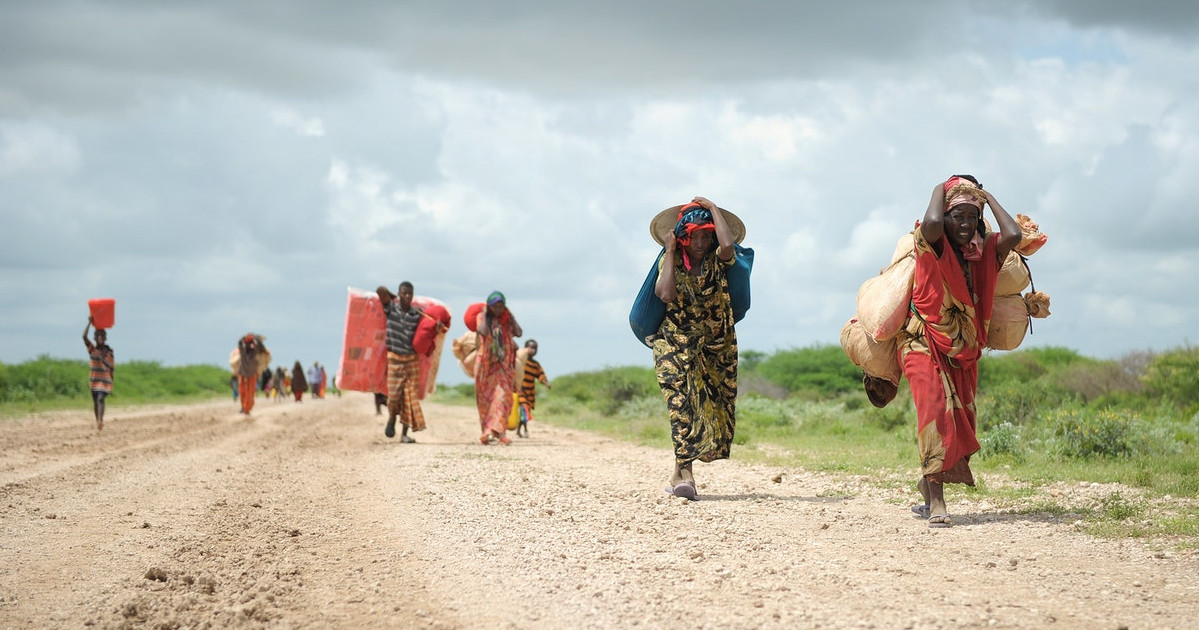IPCC: The impacts of climate change on Africa

Photo: Rawpixel
From the preindustrial era to the present, Africa has contributed only minimally to the increase in greenhouse gas emissions. The continent is responsible for as few as 3% of the total historical emissions, whereas Europe, North America, and Asia each account for about 30%. Yet, the African continent is among the hardest hit by the climate crisis in terms of reduced food production, diminished economic growth, water scarcity, loss of biodiversity, and loss of human lives. Every tenth of a degree above the 1.5°C global warming threshold will have even more devastating consequences on African societies and ecosystems. The latest IPCC report (AR6 WG2), published on February 28, 2022, includes a series of regional insights dedicated to quantifying the impacts of climatic changes on societies and ecosystems at regional scales, assessing the vulnerabilities and adaptation capacities. Following is a synthesis of what is reported in the factsheet on Africa.
Ecosystems
Every increase in temperature of 0.5°C compared to current levels results in widespread and increasing biodiversity loss. Above 1.5°C, 50% of living species are expected to see their population or habitat decimated by one third. At 2°C, between 7 and 18% of species will be at risk of extinction, and over 90% of coral reefs in East Africa will face bleaching, a phenomenon that corresponds to the death of corals.
Food
The increase in agricultural productivity has already dropped by 34% from 1961 due to climate change, more than in any other region. Higher temperatures will further shorten the growing season for crops, putting even more stress on water systems. At 2°C of global warming, the availability of staple foods will drop, compared to 2005 levels, in the majority of Africa. Even marine and freshwater fishing will be seriously threatened. By mid-century, the reduction in fish farming will result in iron deficiency for 1.2 to 70 million people; up to 188 million will suffer from vitamin A deficiency, and 285 million people will suffer from vitamin B12 and Omega 3 deficiencies.

Water
The great variability of precipitation recently observed across Africa has negatively impacted many water-dependent sectors. The scenarios proposed in the report show cross-cutting risks and the need for careful planning under conditions of uncertainty due to the many extreme weather events expected in the future.
Cities and settlements
Rapid urbanization, lack of infrastructure and population growth are factors that increase the exposure to climate hazards of people, assets, and infrastructure in Africa. The phenomenon is particularly concerning in low-lying coastal areas, which will be exposed to risks from sea level rise over the next 50 years. By 2030, over 110 million people will face sea level rise, and between 190 and 245 million by 2060. People under 5 years old and those over 64 are the most affected by heatwaves (at least 15 days per year above 42°C in African cities). These will rise to 360 million by 2100 (compared to 27 million in 2010) if the Earth warms by 1.8°C. If temperatures exceed 4°C, the number will rise to 440 million.
Economy
Climate change has already slowed economic growth in Africa and increased income inequalities between African countries and northern countries in temperate climates. If global warming is kept around 1.5°C, African GDP would be 5% higher by 2050 and 10-20% higher by 2100.
Cultural and natural heritage
Sea level rise and coastal erosion put many African cultural heritage sites at risk because they are neither prepared nor adapted to facing climate change.
Health
Mortality and the prevalence of diseases will increase as global temperatures rise. At 1.5°C, the transmission of seasonal diseases will increase, putting tens of millions more people at risk, especially in Eastern and Southern Africa. Above 1.5°C, death risk from heatstroke considerably increases, by at least 15 people per 100,000 inhabitants annually.
Migrations
Most climate migrations have occurred (and remained) between bordering countries within Africa. In 2018, they increased by 2.6 million, and in 2019 by 3.4 million people. With a 1.7°C increase, between 17 and 40 million people could migrate within sub-Saharan Africa, but this number could rise to between 56 and 86 million on a planet warmer by 2.5°C.
Challenges for adaptation
The main obstacles to adaptation capacity to climate change in Africa are technological, institutional, and financial. Adaptation is costly, and there is a lack of several billion dollars to reach the minimum level of funding promised to Africa by the global financial community. Already at COP15 in Copenhagen in 2009, $100 billion was pledged, yet in 2021 we are still at just over $80 billion. Climate research in Africa also suffers from a severe lack of data, funding, and organization.
Opportunities for adaptation
The costs of adaptation will increase with rising global warming. It is necessary to increase public and private finance flows by several billion dollars annually, strengthen the development of projects for adaptation and planning, focusing on social protection programmes, public works, and healthcare access, paying attention to gender equity and marginalized minorities.
Focusing on ecosystem protection radically reduces their exposure to climate risks, thus ensuring social and economic benefits. The diverse knowledge of African indigenous and local peoples should be recognised as a starting point for adaptation actions at the local level.
Governance and development
Long-term planning, cross-sectoral approaches, and robust legislative frameworks would support both adaptation efforts and information services on climatic changes.
This article was translated into English by Sofia Belardinelli. The original version of this article is available here.
ALSO READ:
- IPCC: Nearly direct correlation between emissions and global warming
- IPCC: Impacts of climate change are not equal for everyone
- IPCC: The impacts of climate change on Africa
- IPCC: The impacts of climate change on Europe
- IPCC: The impact of climate change on small islands
- IPCC: The impacts of climate change on Asia
- IPCC: The impacts of climate change on Oceania
- IPCC: The impacts of climate change on Central and South America
- IPCC: The impacts of climate change on North America
- IPCC: The impacts of climate change on human settlements
- IPCC Synthesis Report: every fraction of a degree matters









